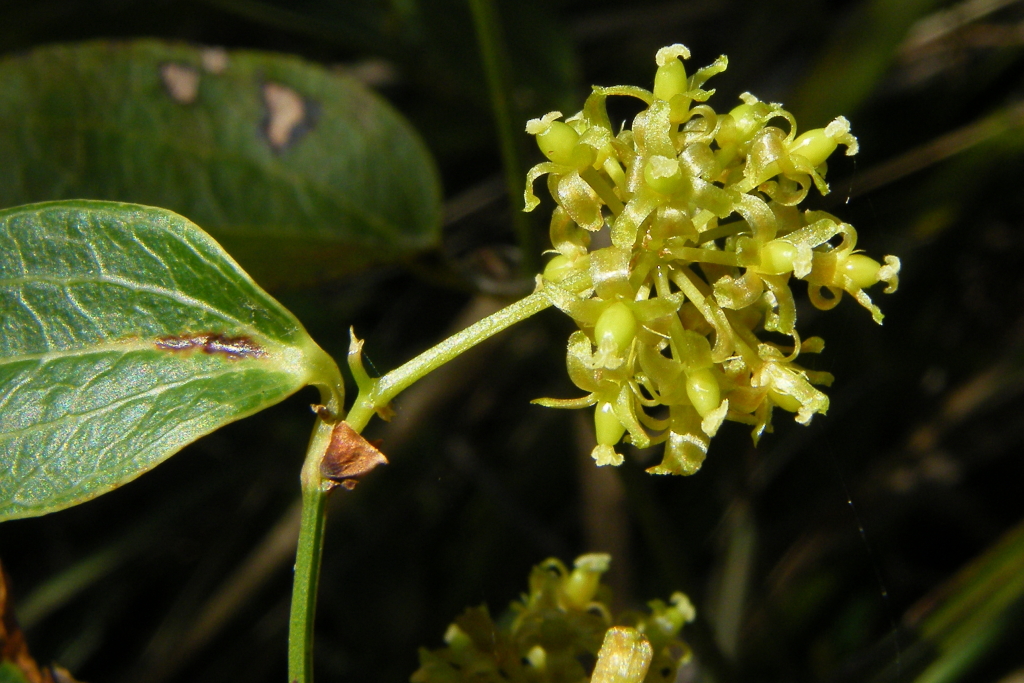Smilax
L.Rhizomatous vines or creepers. Roots fibrous. Stems frequently prickly. Leaves petiolate, ± distichous, resupinate, coarse-textured, with 2–6 convergent longitudinal nerves flanking the midrib, linked by prominently reticulate secondary veins; petiole often bearing paired tendrils on an inflated stipule-like structure. Plants dioecious. Inflorescence an axillary compound umbel with numerous pedicellate flowers; male and female flowers similar, subtended by minute bracts; petals and sepals free, similar. Male flowers with 6 hypogynous stamens, filaments filiform, free, anthers 2-celled, basifixed, dehiscing laterally by slits. Female flowers with a superior ovary; stigma sessile on ovary, 3-lobed. Fruit a berry; seeds solitary or few, sub-globose, brown.
About 300 species, cosmopolitan in tropical and temperate regions; 7 species in Australia, 1 in Victoria.
Several species are cultivated for ornament and commercial use. The rhizomes of one species are the source of Sarsaparilla.
Conran, J.G. (1994). Smilacaceae. In: Walsh, N.G.; Entwisle, T.J., Flora of Victoria Vol. 2, Ferns and Allied Plants, Conifers and Monocotyledons, pp. 734–738. Inkata Press, Melbourne.
 Spinning
Spinning

